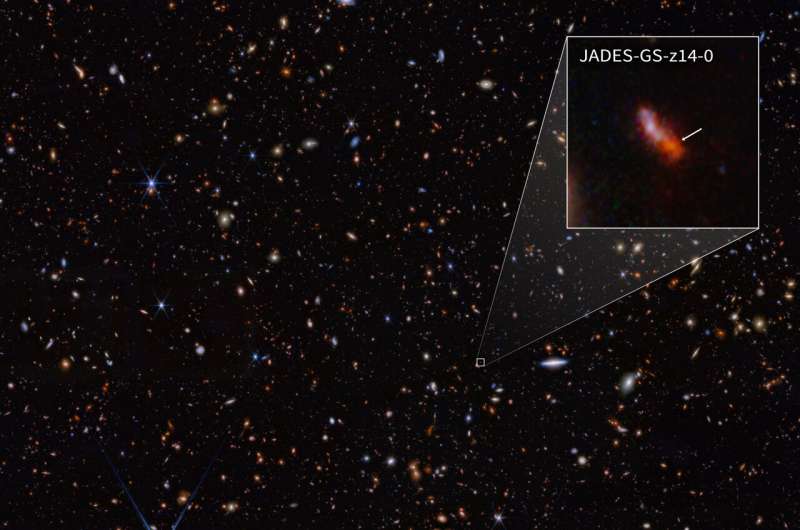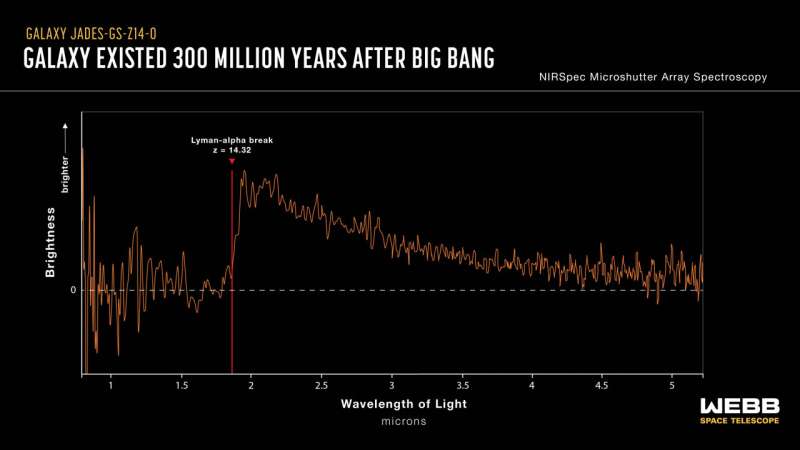PHYS.ORG | 2024 May 30
TY4YA Jac
This infrared image from NASA’s James Webb Space Telescope (also called Webb or JWST) was taken by the NIRCam (Near-Infrared Camera) for the JWST Advanced Deep Extragalactic Survey, or JADES, program. The NIRCam data was used to determine which galaxies to study further with spectroscopic observations. One such galaxy, JADES-GS-z14-0 (shown in the pullout), was determined to be at a redshift of 14.32 (+0.08/-0.20), making it the current record-holder for the most distant known galaxy. This corresponds to a time less than 300 million years after the Big Bang.
[...]
The combination of the extreme brightness and the fact that young stars are fueling this high luminosity makes JADES-GS-z14-0 the most striking evidence yet found for the rapid formation of large, massive galaxies in the early universe. "JADES-GS-z14-0 now becomes the archetype of this phenomenon," says Dr. Stefano Carniani of the Scuola Normale Superiore in Pisa, lead author on the discovery paper. "It is stunning that the universe can make such a galaxy in only 300 million years."
[...]
more
Arxiv paper
Scientists used NASA's James Webb Space Telescope’s NIRSpec (Near-Infrared Spectrograph) to obtain a spectrum of the distant galaxy JADES-GS-z14-0 in order to accurately measure its redshift and therefore determine its age. The redshift can be determined from the location of a critical wavelength known as the Lyman-alpha break. This galaxy dates back to less than 300 million years after the Big Bang. Credit: NASA, ESA, CSA, Joseph Olmsted (STScI)

